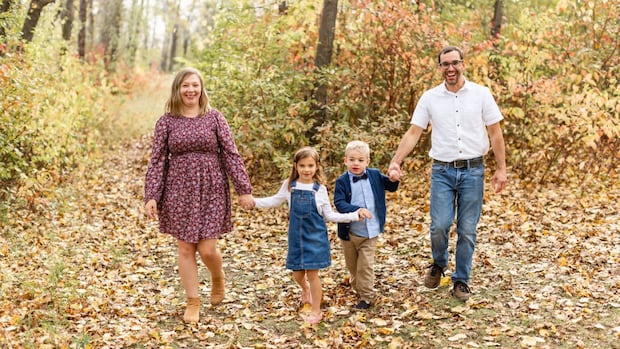As Alberta faces the prospect of another summer plagued by wildfire smoke, experts are urging people to monitor conditions and take steps to protect their long-term health.
Environment Canada issued an air quality warning for the city of Calgary on Wednesday as the Air Quality Health Index (AQHI) hit levels indicating very high risk.
Fires are already burning in parts of Western Canada, and a mix of dry conditions and hot weather could further increase the risk of wildfires in the coming months, Environment Canada warned this week.
“This is awful that we’re facing another potential summer of this poor air quality and wildfire smoke,” said Kerri Johannson, a Calgary-based pulmonary physician.
“We know that long-term exposure to air pollution — and this is exactly what this is — is a risk factor for all sorts of chronic diseases.”
Those illnesses include chronic obstructive pulmonary disease (COPD), asthma and lung cancer, she said.
“It’s very concerning that this has been a chronic situation over the past decade now, where the entire population is being exposed to high levels of particulates – and particulates that contain really toxic chemicals,” said Johannson, who is also an associate professor in the department of medicine at the University of Calgary.
When people breathe in smoke, tiny particles can travel deep into their lungs and trigger inflammation there and throughout the body.
What’s particularly bad about wildfire smoke, Johannson noted, is that it contains particles from anything that was in the fire’s path including trees, tires, building materials and chemicals such as fire retardants.
“Wildfire smoke is quite a dangerous pollutant,” said Opel Vuzi, a regional air quality and health specialist with Health Canada.
“The fine particulate matter … goes deep into your lungs and can be absorbed directly into your blood system. And then the toxins can be carried to other parts of your body like the liver, kidney and so on. So it is really concerning.”
Anyone can experience eye, nose and throat irritation due to wildfire smoke, according to Alberta Health Services. Other symptoms can include a runny nose, cough or headache. People with heart and lung conditions may experience worsening symptoms.
Wildfire smoke exposure can also lead to more serious conditions including a heart attack, stroke, premature death and low birth weight, according to Health Canada.
“There is no safe level of exposure to that particulate matter,” said Vuzi.
Everyone at risk
Seniors, pregnant Albertans, babies, and people with chronic lung or heart conditions are among the most vulnerable to wildfire smoke, Johannson said.
When the AQHI is mid-range, she recommends individuals who face a higher health risk to take precautions including staying inside, avoiding outdoor exercise and using a HEPA air filter to clear indoor air.
When the AQHI reaches as high as 10, everyone is at risk and should be taking precautions, she said.
Vuzi recommends even healthy people should avoid the outdoors and physical activity when the AQHI is seven or higher.
Older people, children and those with health conditions can experience symptoms at lower levels.
Vuzi is urging Albertans to watch the AQHI daily, download the WeatherCAN app, and to be prepared to take steps to protect themselves and their loved ones.
In addition to staying indoors on smoky days, the Alberta government recommends using HEPA air filters, running air conditioners, closing off fresh air intakes, replacing furnace filters regularly and upgrading them if possible, and ensuring that air systems are recirculating the air in your home.
When temperatures are high, Vuzi suggests people who are unable to close doors and windows and run an air conditioner should consider going to locations such as libraries or recreation centres.
Environment Canada also recommends well-fitting N95-style masks as another layer of protection.





